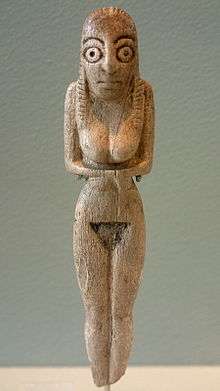El Badari, Egypt
El Badari (Arabic: البداري) is a town in the Asyut Governorate, Upper Egypt, located between Matmar and Qaw El Kebir.

Etymology
The older name of the town is Badarnos (Arabic: بادارنوس)[1], which Timm derives from Anba Darius[2].
Archeology
El Badari contains an archaeological site with numerous Predynastic cemeteries (notably Mostagedda, Deir Tasa and the cemetery of El Badari itself), as well as at least one early Predynastic settlement at Hammamia. The finds from El Badari form the original basis for the Badarian culture (c. 5500-4000 BC), the earliest phase of the Upper Egyptian Predynastic period. The area stretches for 30 km along the east bank of the Nile, and was first excavated by Guy Brunton and Gertrude Caton-Thompson between 1922 and 1931. Most of the cemeteries in the Badarian region have yielded distinctive pottery vessels (particularly red-polished ware with blackened tops), as well as terracotta and ivory anthropomorphic figures, slate palettes, stone vases and flint tools. The contents of Predynastic cemeteries at El Badari have been subjected to a number of statistical analyses attempting to clarify the chronology and social history of the Badarian period.
See also
References
- رمزي, محمد. القاموس الجغرافي للبلاد المصرية. p. 23.
- Stefan, Timm (1988). Das christlich-koptische Agypten in arabischer Zeit. p. 664.
Bibliography
- The Dictionary of Ancient Egypt by Ian Shaw and Paul Nicholson